Дельфы (Греция) – город, возведенный на склоне горы Парнас. Это музей под открытым небом, ставший объектом культурного наследия и вызывающий интерес туристов со всего мира.
Общая информация о древнем городе Дельфы в Греции
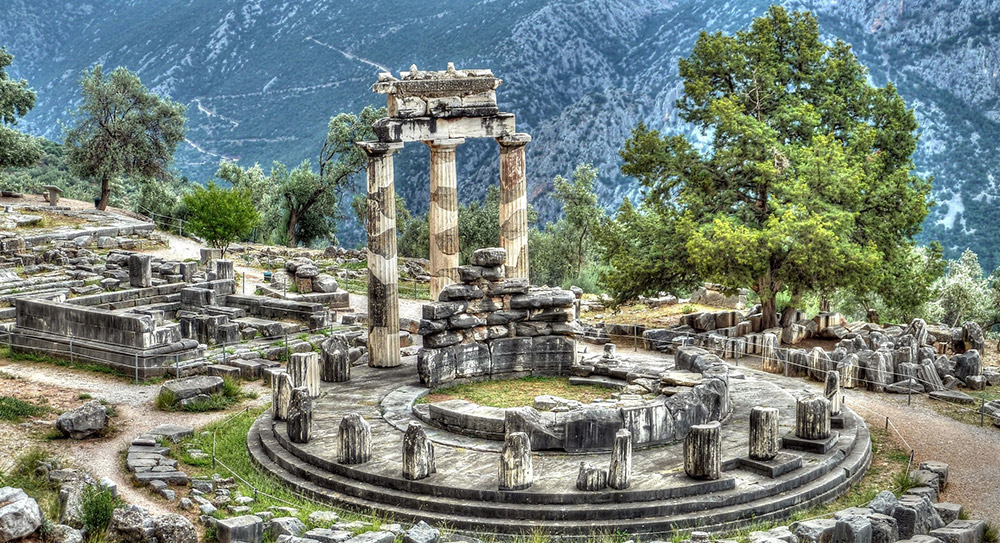
История Дельф началась за несколько столетий до нашей эры. Согласно преданию, место, на котором сегодня находятся древние развалины, носило название «Пифо».
Где находится, и когда лучше посещать
Руины античных Дельф расположены в 9,5 км от Коринфского залива. Территория, на которой можно увидеть развалины, является археологическим заповедником (парком).
Недалеко от древних руин находится небольшое поселение, также носящее название Дельфы. Там проживает 2,3 тыс. человек. В поселении для путешественников построены рестораны, кафе и отели.
Посещать заповедник рекомендуется поздней весной или ранней осенью, чтобы избежать жары и скопления туристов. Приезжать в парк желательно рано утром, взяв с собой питьевую воду. Необходимо надеть удобную одежду и обувь без каблуков и высокой платформы.
История античного города и популярные мифы
Точная дата основания города неизвестна. Первые упоминания об этом месте можно встретить в источниках XVI в. до н. э. В те годы на территории будущих Дельф находился культовый объект, посвященный богине, породившей Землю и все живое. Через несколько столетий святилище пришло в упадок.
Религиозное возрождение началось в Дельфах в VII–VI вв. до н. э. Местные прорицатели получили большую власть и участвовали в решении важных политических задач.
В V в. до н. э. Дельфы имели статус основного духовного центра Древней Греции. Но уже через 100 лет город начал терять свое политическое и духовное значение.
В III в. до н. э. в Грецию вторглись галлы. Они разграбили страну и уничтожили религиозный центр. Через 200 лет, находясь уже под властью римлян, греки восстановили разрушенные храмы. Однако в 394 г. император Феодосий I ввел запрет на деятельность оракулов-язычников, что привело к окончательному упадку религиозного центра.
История зарождения Дельф окутана множеством легенд. Согласно одной из них, Зевс назвал то место, где впоследствии появился город, центром мира (пупом Земли) и установил отметку в виде камня.
Другой миф гласит, что Дельфы принадлежали богине Гее. Она передала владения потомкам. Среди них был Аполлон. В его честь греки построили в Дельфах несколько культовых сооружений.
Как добраться и где остановиться
Удобнее всего добираться до Дельф из Афин. Автобусы отправляются от городского вокзала с периодичностью 0,5–2 часа. Цена билета – 16,40 евро. Поездка длится около 3 часов. Можно заказать трансфер, но стоит такое путешествие более 200 евро.
Туристам, планирующим остаться в городе на несколько дней, рекомендуется остановиться в одном из отелей:
- Amalia Hotel Delphi. Для путешественников оборудованы зона отдыха и открытый бассейн. На территории гостиницы открыты ресторан и бар. Террасы и балконы в номерах позволяют наслаждаться морскими видами.
- Hotel Orfeas. Гостиница относится к числу бюджетных. Номера здесь стоят от 33 евро в сутки.
- Kastalia Boutique Hotel. Отель предлагает своим постояльцам блюда греческой кухни, которые подают на открытой террасе. В Kastalia Boutique Hotel можно взять велосипед напрокат.
- Pan Hotel. Преимущества этой гостиницы заключаются в том, что она ближе других расположена к археологическому парку и подходит для отдыха с детьми.
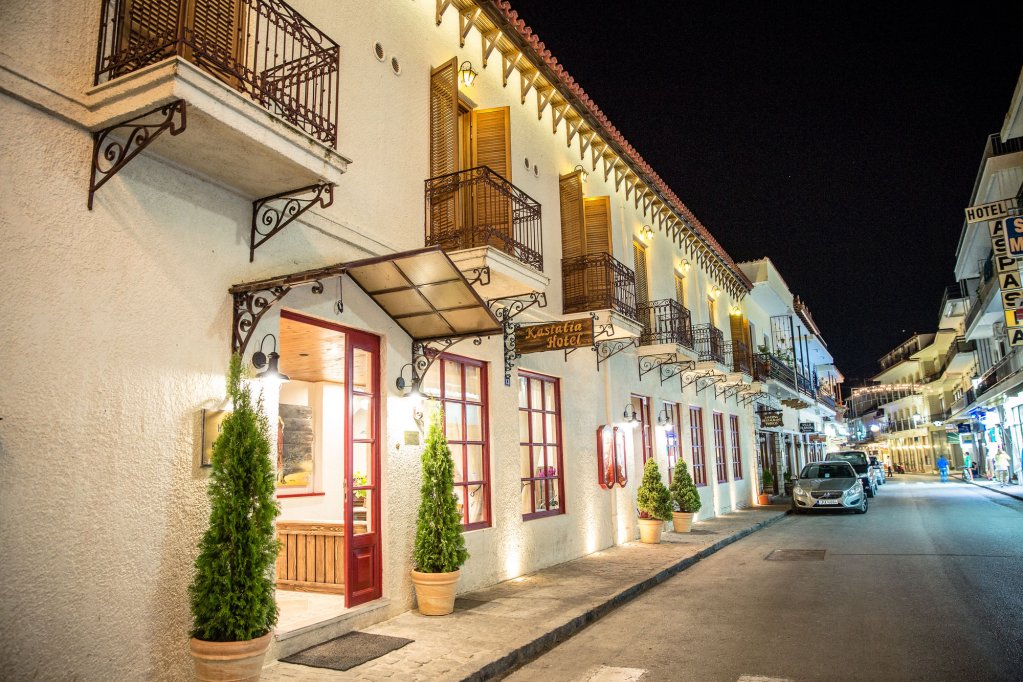
Интересные факты об античном городе
Интересные факты о Дельфах:
- В античной Греции город был знаменит тем, что в нем проводились спортивные состязания – пифии. Эти соревнования считались вторыми по значимости после Олимпийских игр и получили свое название в честь победы бога Аполлона над драконом Пифоном. Изначально состязания проводились для музыкантов. Постепенно организаторы добавляли атлетические дисциплины и игры стали полностью спортивными.
- В честь древнего города назван язык программирования Delphi.
- Согласно преданию, пророчица Пифия получала откровения, сидя на треножнике над расщелиной в скале. В конце XIX–начале ХХ вв. французские исследователи обнаружили под храмом Аполлона трещину, из которой выходили газы – метан и этан. Такая смесь оказывала слабый наркотический эффект и могла стать причиной появления галлюцинаций.
- По одной из версий, слово «дельфы» («дельфи») означает «живот», «матка», «место зарождения». Это название земле, на которой был возведен город, по легенде, дали моряки.
Главные достопримечательности города
На территории заповедника сохранилось множество памятников архитектуры, но некоторые здания пострадали от землетрясений или разрушились от времени.
Культовый храм Аполлона
Культовое сооружение было возведено в IV в. до н. э. В течение нескольких столетий оно считалось главным храмом Древней Греции. Жители других городов приезжали сюда, чтобы получить пророчество от Пифии. Здание плохо сохранилось. От него остались только некоторые колонны, часть фундамента и стена, на которую нанесены обращения к Аполлону.
.jpg)
Святилище Афины
Здание было выстроено в форме ротонды. До наших дней сохранились большая часть фундамента и 3 колонны. Святилище возведено из материалов разного цвета. На его крыше были установлены фигуры танцующих девушек.
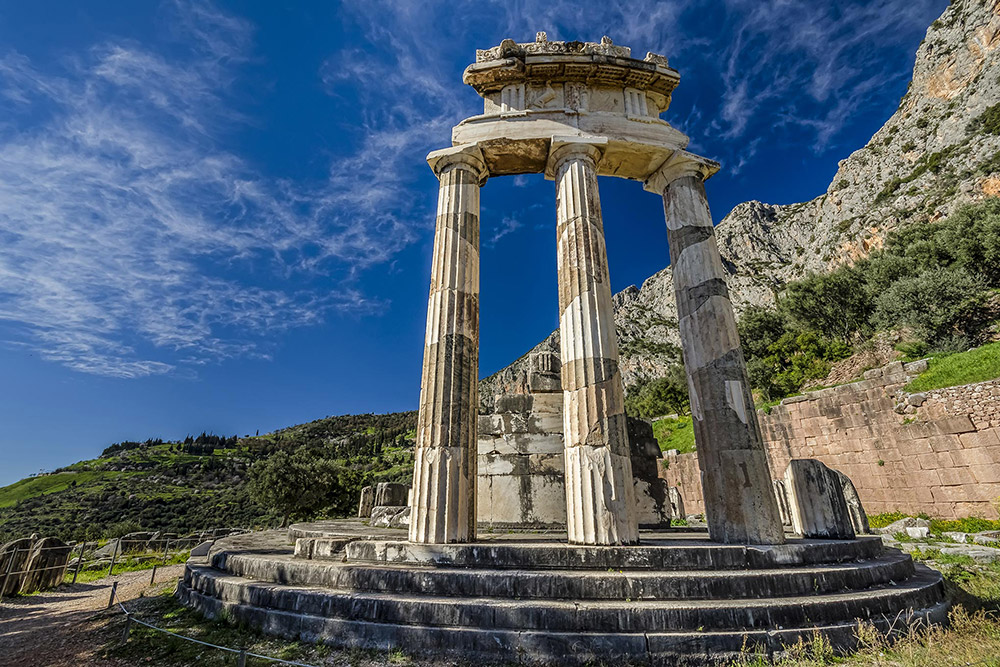
Главный алтарь святилища
Главный алтарь расположен напротив храма Аполлона. Достопримечательность почти полностью сделана из черного мрамора.
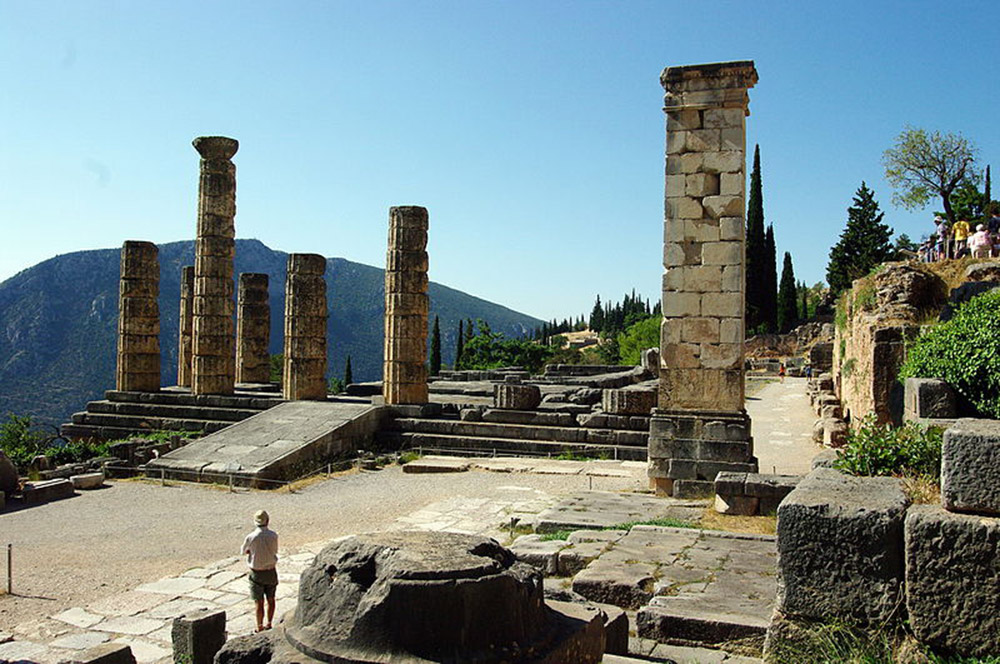
Античный стадион
Стадион был рассчитан на 6 тыс. зрителей. Это место служило площадкой для занятий спортом. Здесь устраивались состязания атлетов.
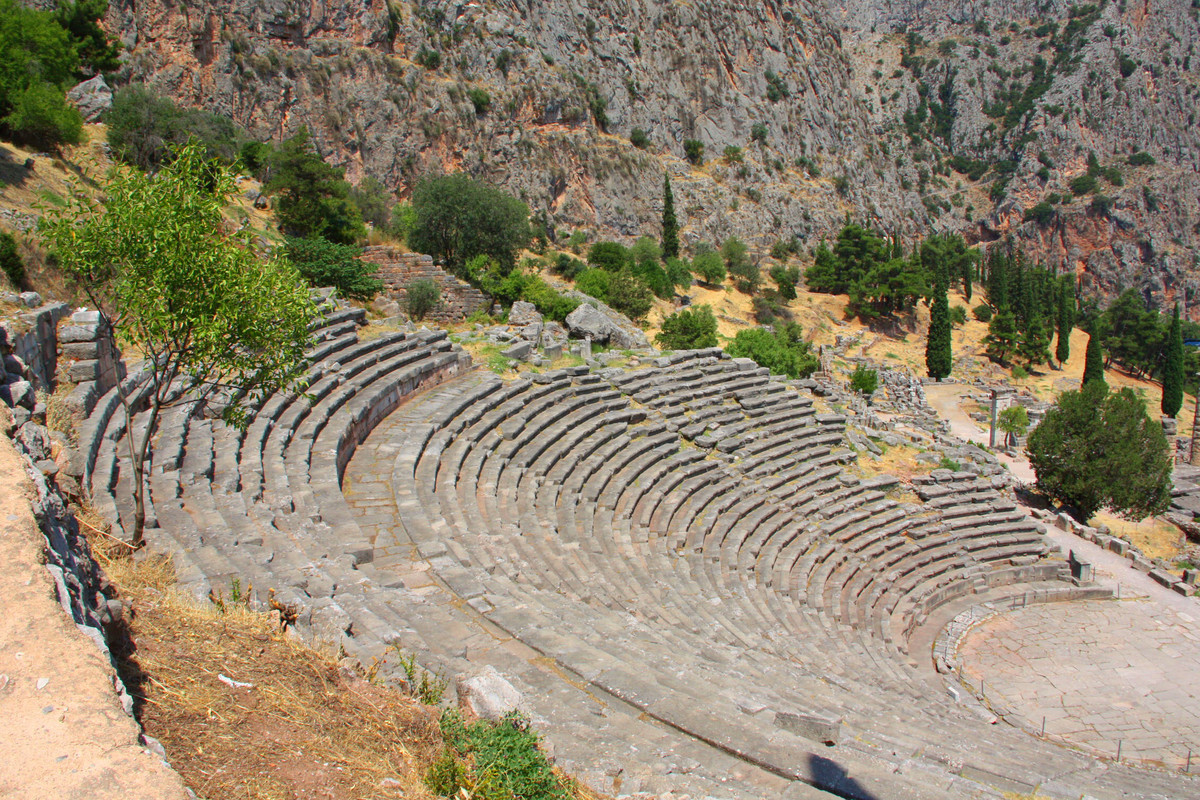
Древний дельфийский театр
Возведенный в VI в. до н. э. театр мог вместить не менее 5 тыс. зрителей. Гости рассаживались на 35 рядах. До наших дней от постройки, кроме фундамента, почти ничего не сохранилось. Руины можно найти недалеко от храма Аполлона.
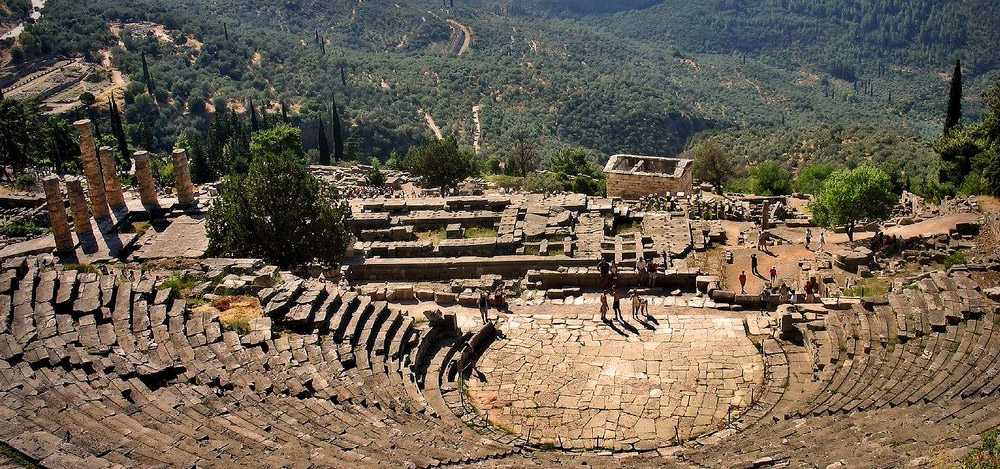
Толос Афины Пронайи
Толос находится на месте святилища богини, между сокровищницей массилийцев и новым храмом Афины. Из записей знаменитого архитектора из Рима Витрувия ученые узнали, что ответственным за возведение этого здания был Феодор Фокидский. Назначение толоса до сих пор не установлено.
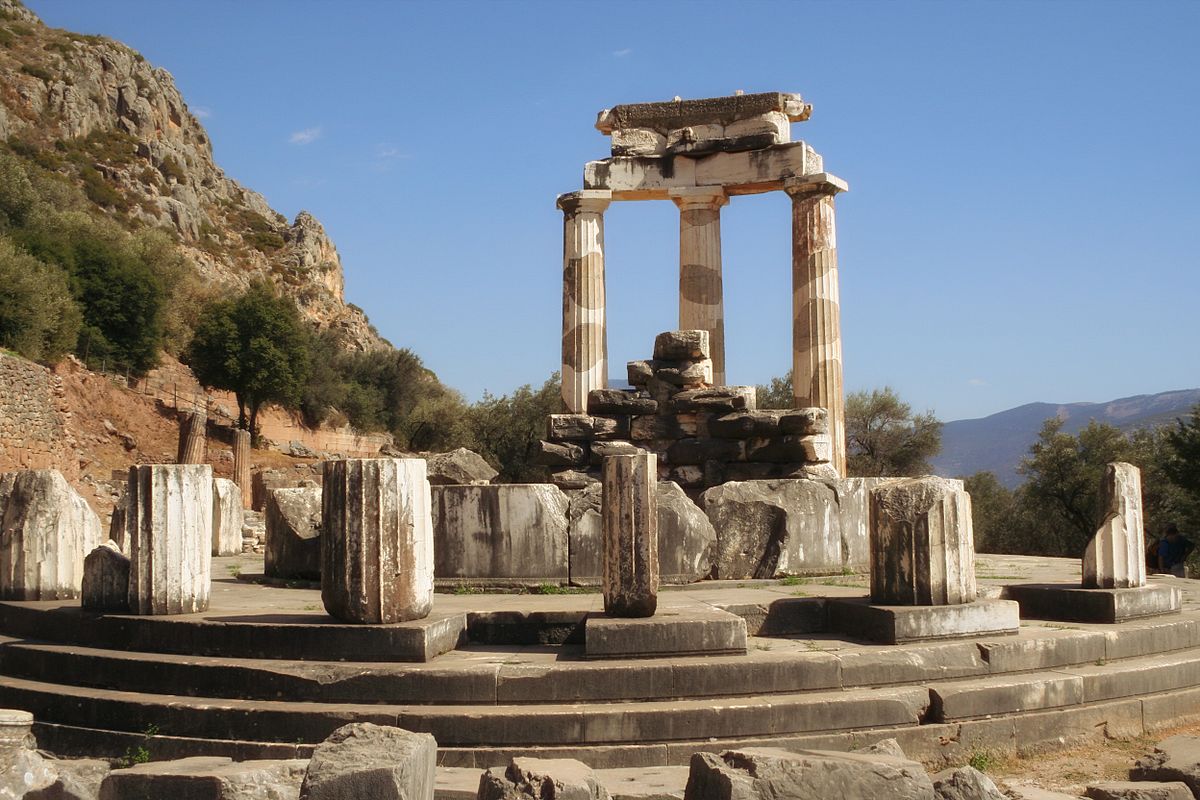
Сокровищница афинян
Сокровищница символизирует победу афинян в Саламинском сражении. Небольшая постройка использовалась для хранения трофеев. Сокровищница хорошо сохранилась. На ее стенах можно рассмотреть барельефы, изображающие сцены из мифов Древней Греции.

Кастальский источник
Источник у подножья горы Парнас считается священным. Кастальский ключ использовали для омовений перед проведением обрядов. Возле него искали вдохновения поэты и музыканты. По легенде, тот, кто сделает 9 глотков священной воды, встретит любовь всей жизни.
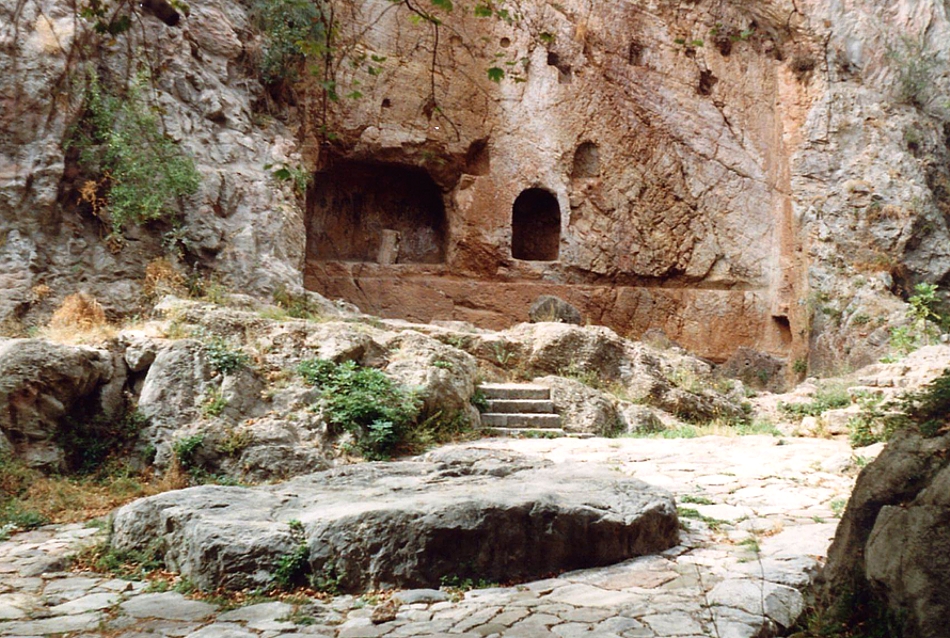
Священная дорога
Так называли дорогу между святилищем Аполлона, алтарем хиосцев и центральным храмом оракула. Эта тропа предназначалась для паломников. Люди, желающие получить пророчество дельфийского предсказателя, должны были пройти по священной дороге, принести жертву на алтаре и встать в очередь к оракулу.
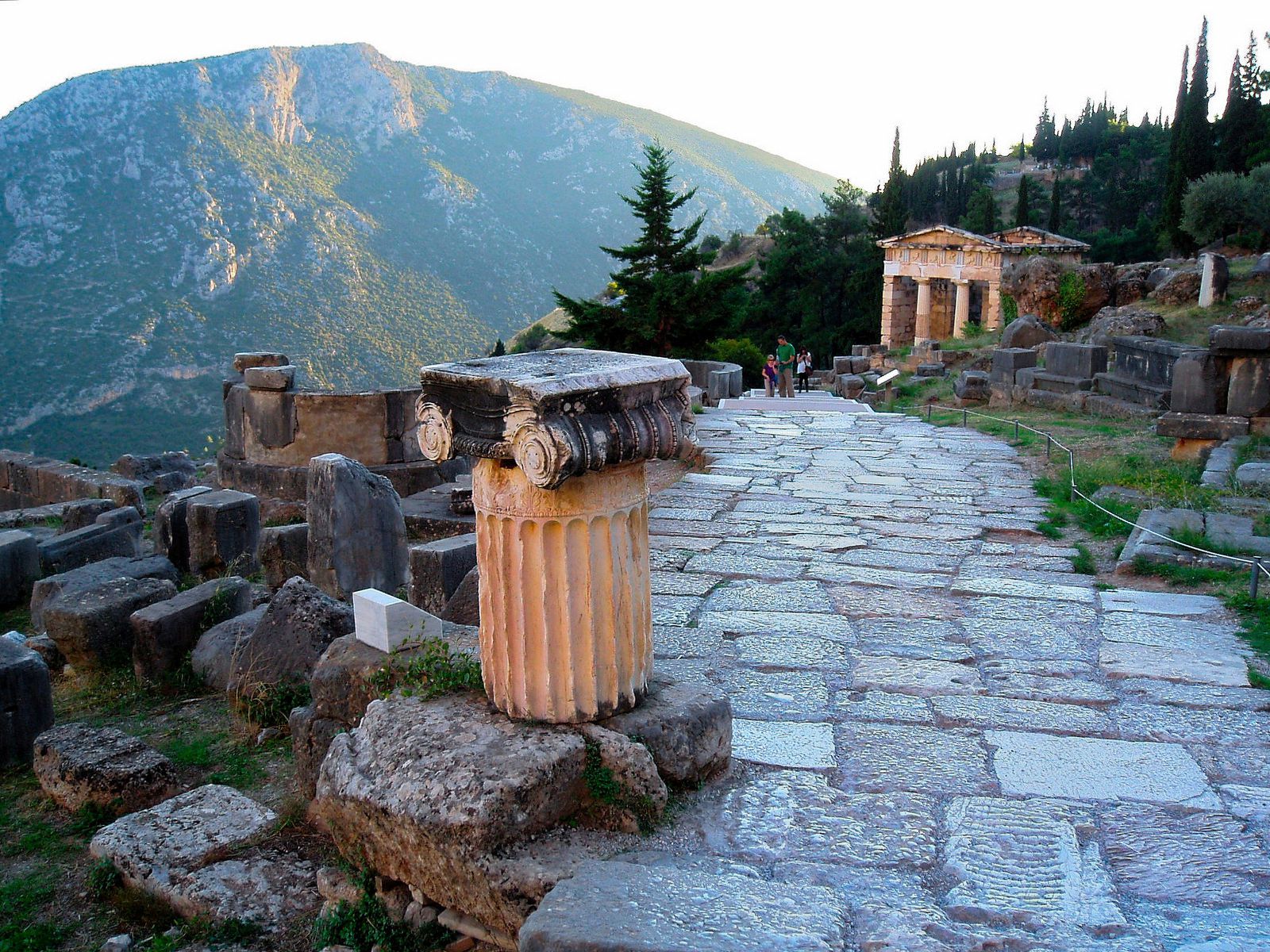
Деревня Арахова
Горная деревня расположена на склоне горы Парнас. Арахова славится своими ремесленниками, создающими ковры ручной работы. Помимо сувенирных лавок здесь можно найти кафе и рестораны. Каждую весну в деревне проводится праздник пастухов, в котором принимают участие и туристы.
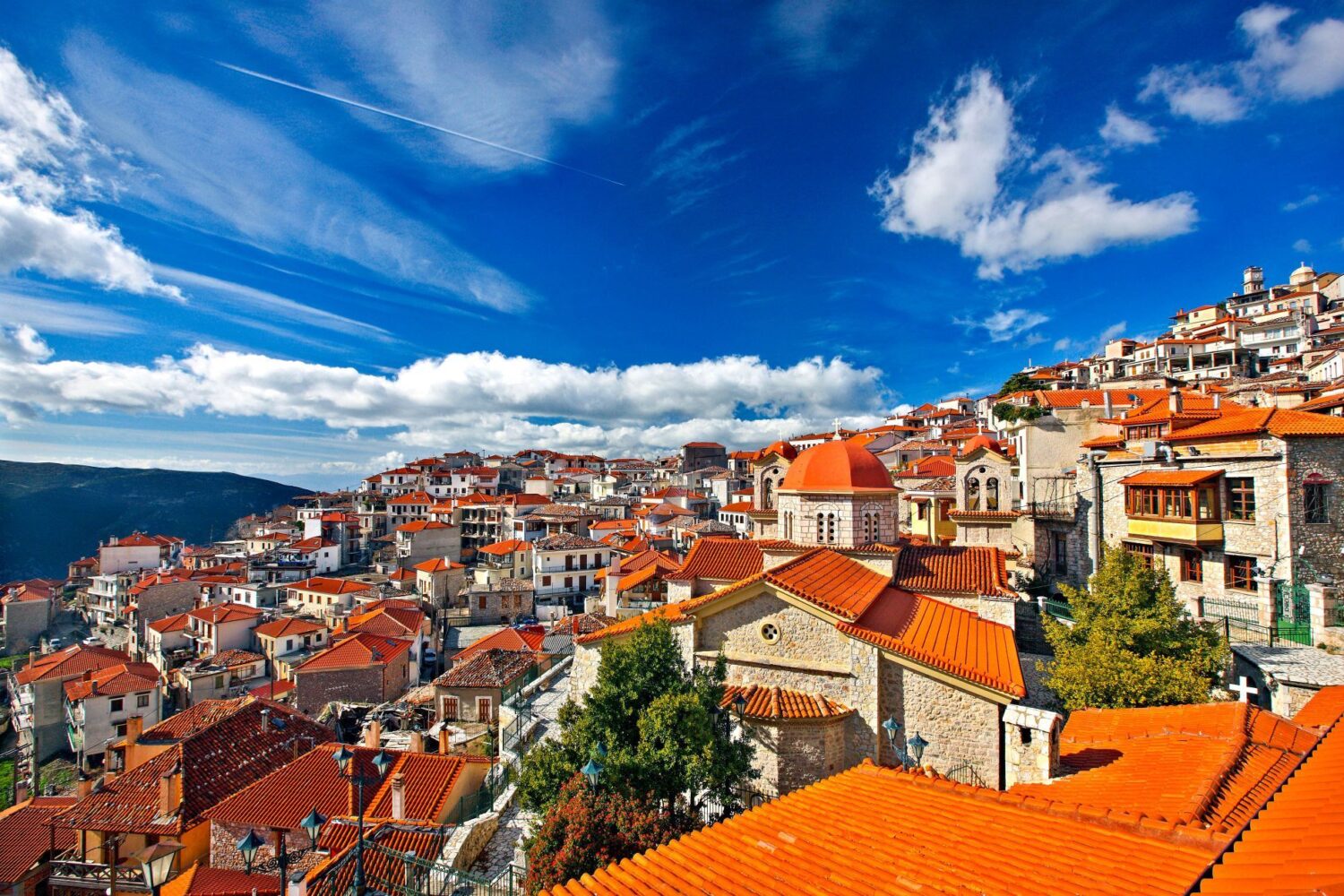
Гора Парнас
В греческой мифологии гору называли центром Вселенной. Легенда гласит, что на вершине Парнаса отдыхали греческие божества. Больше других эту гору любил Аполлон. В зимние месяцы на склонах функционирует горнолыжный курорт. В летние здесь можно увидеть поклонников туристических походов.
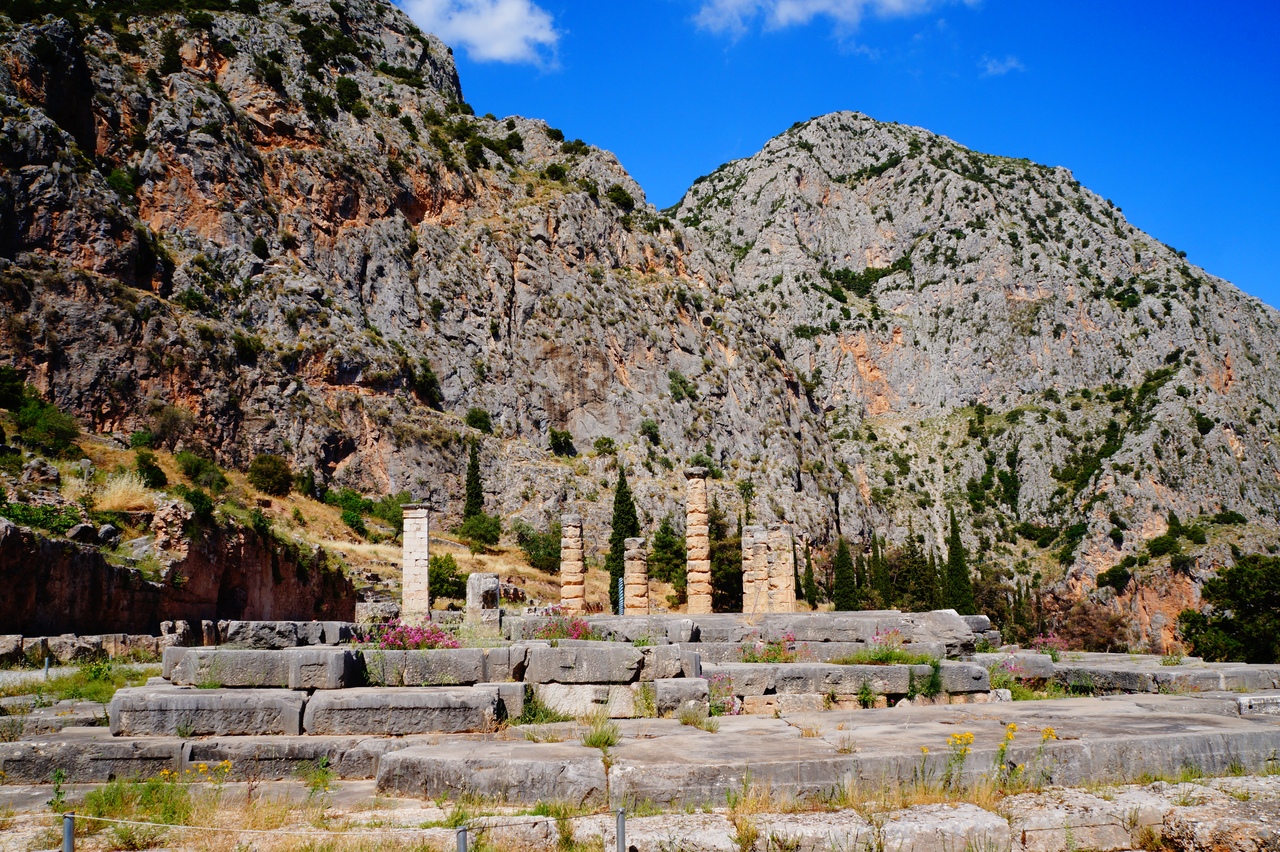
Археологический музей
Музей представляет собой небольшую галерею, экспозиция которой рассказывает о значении культуры в жизни Древней Греции.
Все представленные экспонаты являются подлинниками, обнаруженными во время раскопок.
Здесь можно увидеть:
- оружие;
- барельефы;
- скульптуры;
- доспехи;
- аксессуары.
На посещение галереи нужно потратить не менее 1 часа.

Коринфский залив
Залив находится между полуостровом Пелопоннес и материковой частью Греции. Это место сочетает горные и морские пейзажи. Отдых на побережье подходит тем, кто предпочитает уединение и созерцание природы.
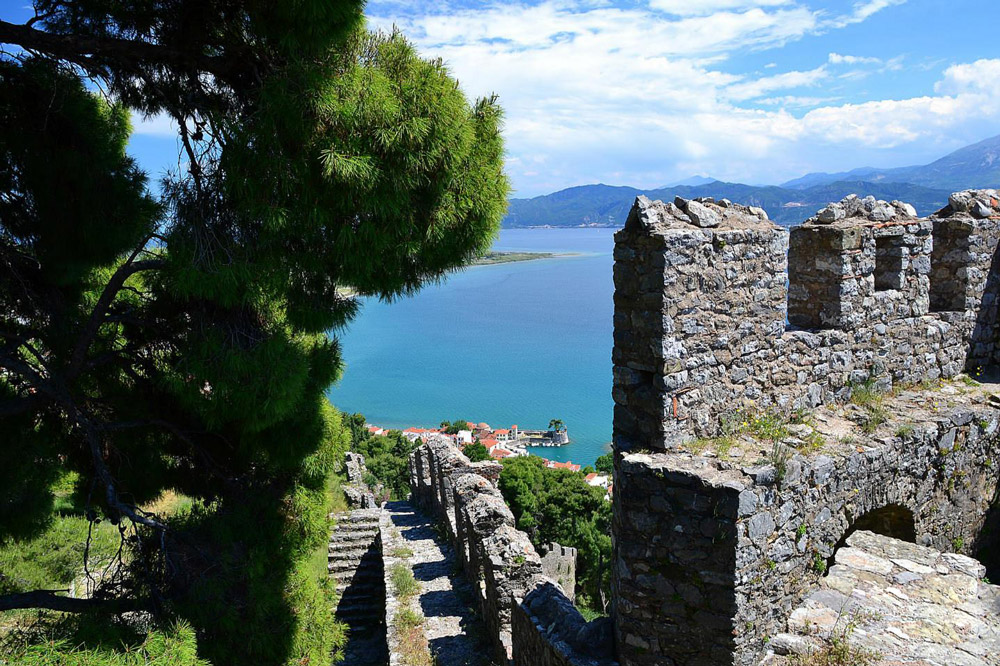
Другие достопримечательности Дельф, которые стоит посмотреть и посетить
В Дельфах также стоит посмотреть:
- Пуп Земли. Монумент представляет собой камень конусовидной формы, символизирующий центральную часть Вселенной.
- Музей Дельфийских игр. Учреждение расположено в доме знаменитого греческого поэта Ангелоса Сикелианоса (1884–1951).
- Церковь св. Николая. Небольшой христианский храм находится в современных Дельфах.
- Сифнийскую сокровищницу. Постройка была предназначен для хранения пожертвований. Сокровищница располагалась вдоль Священного пути. От древнегреческого здания сохранилась только часть фундамента.

Интересные экскурсии по Дельфам
Гостям античного города могут быть интересны следующие экскурсии:
- «Обзорная». Посещение парка стоит около 82,5 евро для взрослого и 42,9 – для ребенка 5–11 лет. Экскурсионную группу сопровождает опытный гид. В стоимость тура входит проезд от Афин до археологического парка и обратно.
- «Боги, герои и нимфы». Ее приблизительная стоимость – 288 евро. В группе не более 4 человек. Экскурсия включает посещение деревни Арахова, где путешественникам предлагается дегустация местных лакомств и сыров.
- «Дельфы–Метеора». Туристов ожидают осмотр всех достопримечательностей заповедника, ночлег в Каламбаке и посещение монастырей Метеоры. Длительность экскурсии – 2 суток.
Заказать экскурсионный тур можно в некоторых отелях или на сайте туристического агентства.
